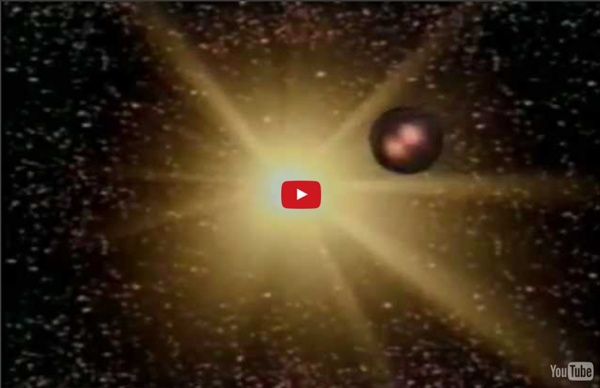



"Laws of Physics for a Holographic Universe" --New Theories of Space-Time From: Daily Galaxy Researchers at the University of Southampton have taken a significant step in a project to unravel the secrets of the structure of our Universe. One of the main recent advances in theoretical physics is the holographic principle. According to this idea, our Universe may be thought of as a hologram and we would like to understand how to formulate the laws of physics for such a holographic Universe. A new paper released by Professor Skenderis and Dr Marco Caldarelli from the University of Southampton, Dr Joan Camps from the University of Cambridge and Dr Blaise Goutéraux from the Nordic Institute for Theoretical Physics, Sweden published in Physical Review D, makes connections between negatively curved space-time and flat space-time. Flat space-time and negative space-time describe an environment in which the Universe is non-compact, with space extending infinitely, forever in time, in any direction. Read the full article at: dailygalaxy.com Tune into Red Ice Radio:
Japanese Scientists Say Our Universe Is a Hologram There are many points of view on the origin of the universe: from scientific theories and single hypotheses, to philosophical and religious assumptions. One of the most common is the so-called Big Bang theory, according to which, the universe originated more than 13 billion years ago and is constantly expanding. Now, Japanese researchers presented evidence to suggest that the universe is in fact nothing but a projection. A team of Japanese researchers presented evidence that the universe is actually a giant hologram, writes Huffington Post. Several years ago, the scientist suggested the way in which the holographic principle may be realized. This idea created enthusiasm in the science circles because with its help a popular, but not yet proven string theory gets a solid foundation. Credits: Learning Mind Additional References: Huff Post, ScientificAmerican Image: Credits
Simulations back up theory that Universe is a hologram At a black hole, Albert Einstein’s theory of gravity apparently clashes with quantum physics, but that conflict could be solved if the Universe were a holographic projection. A team of physicists has provided some of the clearest evidence yet that our Universe could be just one big projection. In 1997, theoretical physicist Juan Maldacena proposed that an audacious model of the Universe in which gravity arises from infinitesimally thin, vibrating strings could be reinterpreted in terms of well-established physics. The mathematically intricate world of strings, which exist in nine dimensions of space plus one of time, would be merely a hologram: the real action would play out in a simpler, flatter cosmos where there is no gravity. Maldacena’s idea thrilled physicists because it offered a way to put the popular but still unproven theory of strings on solid footing — and because it solved apparent inconsistencies between quantum physics and Einstein’s theory of gravity. Regime change
Des chercheurs japonais apportent des preuves qui renforcent la théorie selon laquelle notre Univers ne serait qu’une grande projection holographique ! | La société solidaire des hommes et durable pour la planète Chers lecteurs, © thinkstock. Une équipe de chercheurs japonais a apporté des éléments de preuve convaincants qui renforcent la théorie selon laquelle notre Univers ne serait qu’une grande projection holographique d’un cosmos plus simple, rapporte la revue scientifique Nature. Il s’agit d’une théorie proposée par Juan Maldacena en 1997. En se basant sur la théorie des cordes et le principe holographique, le physicien a imaginé un univers à dix dimensions où la gravition résulte de cordes vibrantes. Et les deux articles publiés par Yoshifumi Hyakutake et ses collègues japonais de l’Université Ibaraki nous permettent aujourd’hui de penser que Maldacena avait vu juste. Les univers décrits par Maldacena et Hyakutake, celui à dix dimensions et celui sans gravitation, ne ressemblent pas au nôtre, précise Juan Maldacena dans la revue Nature. Source : Like this: J'aime chargement…